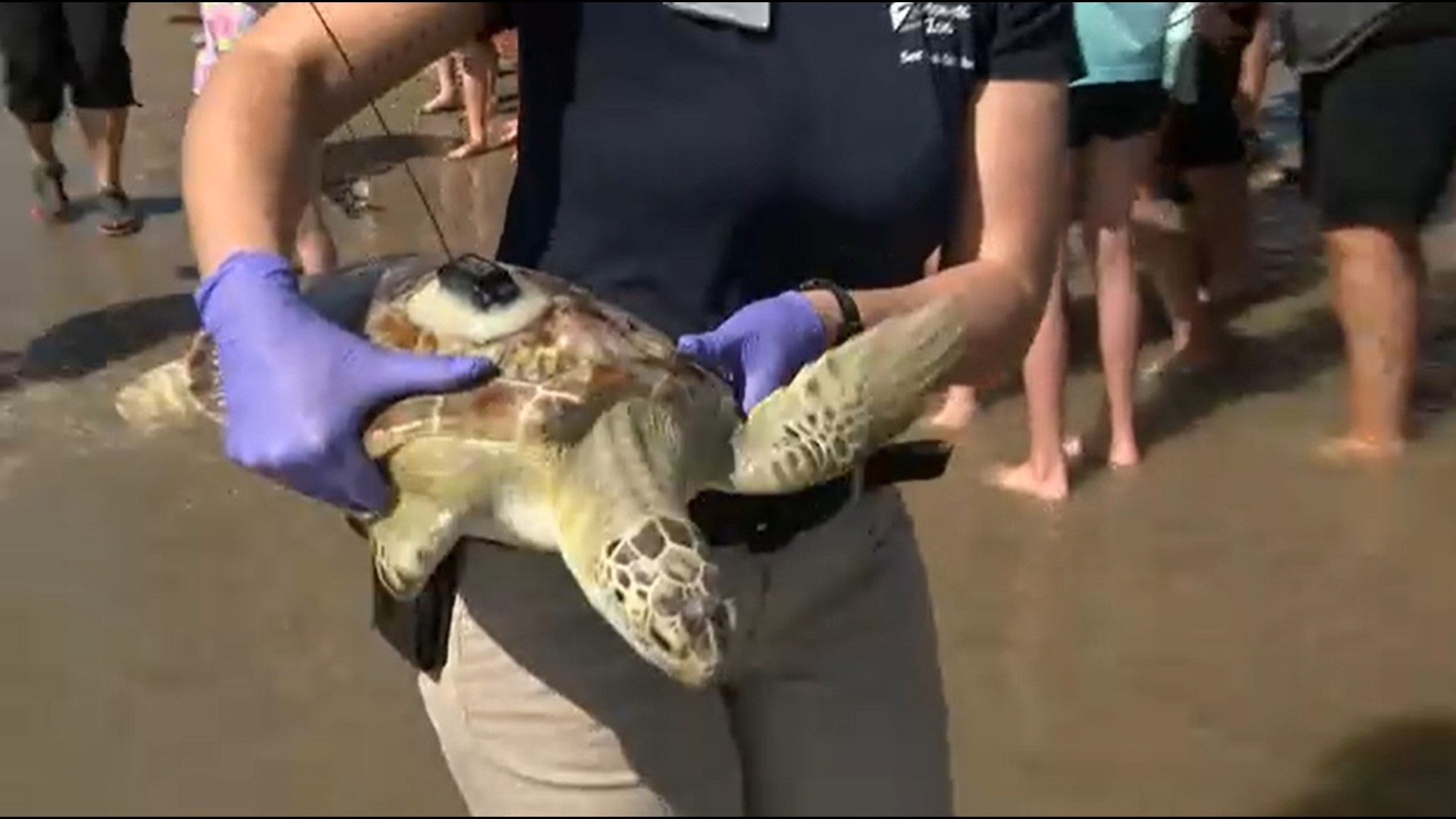GALVESTON, Texas — A big crowd gathered on a Galveston beach Wednesday where a dozen green sea turtles were released back into the wild.
Volunteers rescued the cold-stunned turtles that stranded in Galveston Bay and Matagorda Bay during subfreezing temperatures in January.
“When they were found by our team or the A&M team, their body temperature was at freezing or just slightly above, which is not compatible with life," Dr. Joe Flanagan with the Houston Zoo said.
The turtles also showed signs of pneumonia and muscle damage from being tossed around in wind-driven waves and thrown against rocks or sand.
Since being nursed back to health, they've been active, eating well and growing, according to the zoo.
The Zoo's sea turtle team and Texas A&M's Gulf Center for Sea Turtle Research were on hand to release the now healthy turtles back into the Gulf.
“They are healed from their injuries but they still have a long time ahead of them," Flanagan told us. "These animals live 75 to 100 years, maybe even longer.”
One by one, the stars of the show were carried past the cheering crowd and gently placed into the water.
“I'm just glad they were able to go back home and be in their habitat," one excited student told us.
Three turtles are wearing satellite monitors so experts can track their journeys.
“This will allow us to get 10 to 15 locations per day over the next three to four months and we can see where these turtles are spending their time," Dr. Chris Marshall with the Gulf Center for Turtle Research said.
He said the data will help ensure the endangered population continues to get the help it needs.
"Over the years, the populations have really dwindled and things have been put into place to help them recover," Marshall explained. "But there’s a lot more work that needs to be done.”
Texas A&M hopes to open a sea turtle hospital in Galveston in the next two years.
Experts say if you find a sea turtle on the beach, you shouldn't touch it. Instead, call 1-866-TURTLE-5 to report it.
More about green sea turtles
- Average adults are 3 to 4 feet in length and weigh between 240 and 420 pounds. The largest green sea turtle ever found was 5 feet long and 871 pounds!
- Young turtles eat words, young crustaceans, aquatic insects, grasses and algae. As they grow larger, they eat mostly sea grass and algae.
- They're mainly found near the coastline, around islands or in bays and protected shores. It's rare to see them in the open ocean.
- Nesting females lay an average of 115 eggs at a time and they incubate for about 60 days.
- Green sea turtles are considered threatened in the U.S. and endangered with a high risk of extinction worldwide.
- The biggest threat to their survival is commercial harvest for eggs or food. Other green turtle parts are used for leather. Small turtles are sometimes stuffed for curios. Being caught in commercial shrimp trawling is another threat.
Source: Sea Turtle Conservancy



